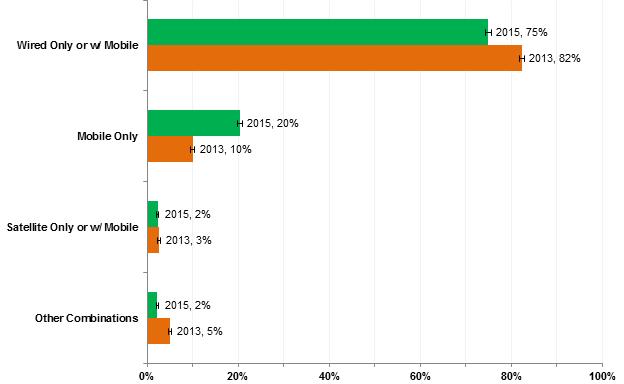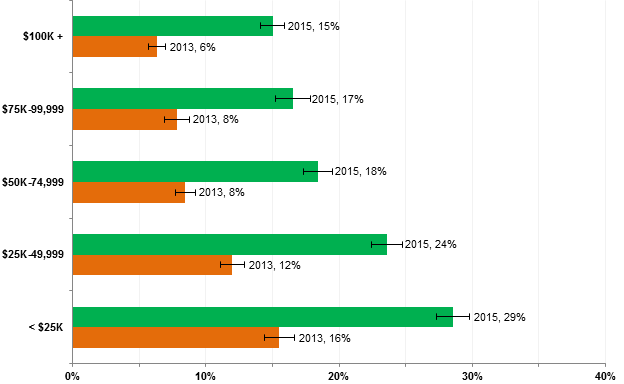Despite multiple social programs designed to lessen the digital divide between low-income homes and those that earn more money, roughly a third of Americans still don't have a fixed broadband connection at home.
A new survey from the National Telecommunications & Information Administration (NTIA), however, reveals that home broadband use is actually on the decline and it may have little to do with household income.

In 2013, roughly 82 percent of online households had a wired connection. That figure dropped to just 75 percent in 2015. Conversely, only 10 percent of households relied on mobile devices exclusively for their Internet needs in 2013. Two years later, the number of mobile-only homes doubled to 20 percent.
As the NTIA notes, the growth in online households that reported only using mobile Internet service to go online at home appears to have come at the expense of wired broadband connections. And while the trend is evident across multiple demographics, it's still most prominent among low-income families.

In 2013, for example, 16 percent of those earning less than $25,000 a year said they went online at home exclusively via mobile Internet service. That figure swelled to 29 percent in 2015. For reference, among those with incomes over $100,000 a year, six percent used mobile Internet exclusively at home compared to 15 percent in 2015.
Overall, the results aren't all that surprising. 4G LTE often rivals speeds offered by hardwired connections and with smartphones becoming increasingly more powerful and cheaper to own, it's easier for low-income families to acquire them.